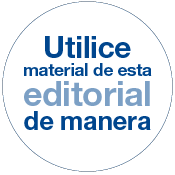Today we are here to share with you all our new sign language project: the tale La dama del cuadro (The lady in the painting).
This story is available in the book Un confinamiento de cuentos (Stories of a lockdown), an anthology written over the three months of the lockdown imposed during the COVID-19 pandemic. On the occasion of the International Day of Sign Languages, we decided to publish a really special idea we had about La dama del cuadro, which you may know discover all about in this article.
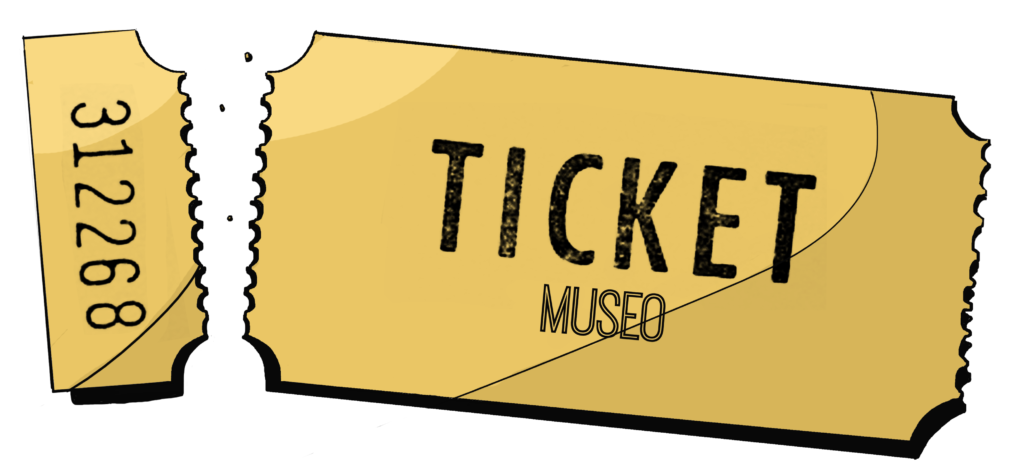
What is La dama del cuadro?
La dama del cuadro is a 7 pages short story with over 2000 words, written with an omniscient point of view and in narrative past tense.
Fantasy and mystery together to create a story that explores the self-dissatisfaction and the projection of desires through an obsession for what one does not have:
«Daniela is a young girl who, after the lockdown, decides to visit the museum of the city where she lives. There, the portrait of a woman comes to life and both start having a conversation about how is it like to live in painting and in the real life… until one decision made by Daniela will change their destinies forever«.
As author, I fell in love with the story from the very first moment, since the scenario is simple and universal: I was sure that so many people could empathise with Daniela. Also, the possibilities for using turning points and comedy between the two of them were diverse. That way, I created a structure based on three acts with an initial prologue to set the story context.
An illustrated tale
As we were working on Un confinamiento de cuentos, we collaborated with different artists to create independent illustrations for some of the stories. La dama del cuadro was one of them and the illustrations were done by the Italian illustrator Badyr Askandar.
That way, from April to May 2020, work began on the illustrations.
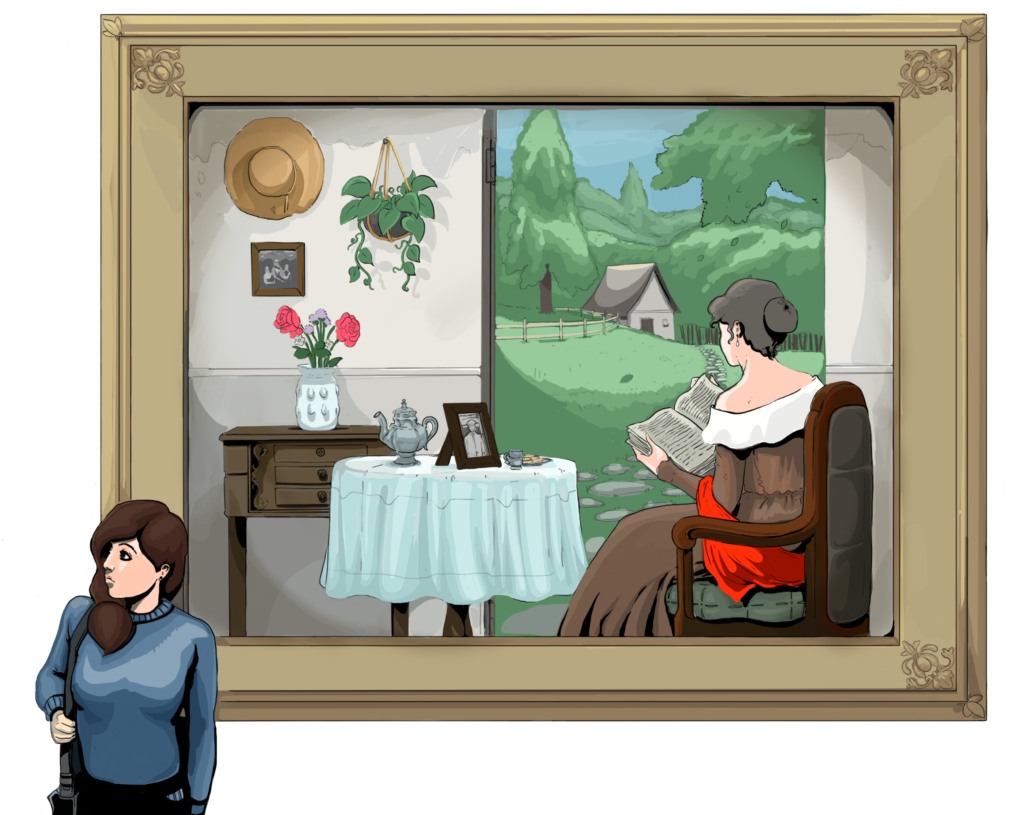
Creating bridges: sign language & collaboration process
As explained above, creating a sign language version of the original story was later in the process when, one day, while talking with Mónica Díez, a special proposal of collaboration / collaborative proposal came up.
Mónica has collaborated with us on several previous occasions. She was part of the team that participated in the adaptation process to create a sign language version of Tiempo de blues. She also helped us with the sign language dialogues in SWING! La vida d’un secret.
At first Mónica had some doubts whether doing it or not: in Tiempo de blues and in SWING! she was at all times behind the cameras and, even though she has an extensive experience in front of the camera (as you can see in her platform Fénix LS), in La dama del cuadro she also had to translate and adapt the story to her mother tongue with an added challenge. Together with the narrator, Daniela and the lady in the painting, she had to play three very different characters!
A few days later her decision was made: the answer was yes!
Stages and steps in the adaptation process
With Mónica in the team, we started to work on the translation from the original text to the sign language (using glosses and comments). These glosses were carried out by Mónica with who we repeated the scene various times to see if everything worked perfectly or any changes had to be made.
This process was a bit different compared to Tiempo de blues, as we did not count with a sign language interpreter in the team. Both Monica and I, we had enough written and oral proficiency of the languages in use during the creation process: the Spanish language and the Spanish sign language.
The communication was fluid and direct so we could focus ourselves on the creative process around La dama del cuadro. Besides, we learnt a lot from each other: Mónica, in her case, she gained a deeper insight into the audio-visual production process. On my side, I improved my knowledge on sign language and learnt some of the needs of the deaf people so they can enjoy properly the audio-visual contents.

As you can see in the picture above, we translated the script but also, as we had the illustrations by Badyr, the story was divided into different sections. Every time a sign language section ended, it would be continued by an illustration which would sum up the section itself.

The illustrations helped to create a clear and natural structure so the sign language information could be well-understood. The main reason was because there is a little pause after every illustration so the viewer can digest all the information given and get ready for the next section.
That decision allowed us to speed up the filming process as we knew at all times which angle to film it from and where did each section end.
Right after that, the adaptation process into an image format began.
Sign language and storytelling
Our main goal was to make of the sign language the absolute protagonist of the story, no subtitles and no voice-over on it. Do not forget that sign language is expressive, gestural, and full of details which means every element can result on a loss of information for the addressed audience: the deaf community.
Thus, La dama del cuadro was a case study to analyse how sign language is represented in a storytelling format.
Voice tone, pauses, intonation, volume… all of them are extremely important during the intervention of the narrator.
How to include those in La dama del cuadro?
The evolution of La dama del cuadro
1- The first step was to remove some sentences from the original text so the sense of rhythm in the production was maintained. Not to have a silent video as a final result, some tunes/musical pieces were added. These were lineal pieces, with no change of intensity, not to be a distraction during the sign language narration.
2- Also, from the fourth part on, (minute 1:43) the point of view in the narration changed. In the original story, there is an omniscient point of view in third person, but that would not work in the sign language version. Being a long conversation the main part of the story, a first person was chosen to be the narration in that case. By doing so, the audience could perfectly feel at all times the reaction of both Daniela and the lady in the painting, in a direct and close way, in search of that empathy chased in the story.

3- In this project, the acting was so important. For that reason, and after discussing with Monica, we decided to include in La dama del cuadro motions and actions that do not naturally belong to the sign language and only served as a story context reference. For example, when the characters changed clothes, Mónica was mimicking to represent the different clothing while talking in sign language.

4- As the process went on, we decided that light was going to be an essential element for the correct support of the events in the story. That way, and to keep the visual harmony going, Carlos Gutiérrez (the DoP of the project) was changing the colour backlight so the silhouette of Monica had completely changed by the end of the story.

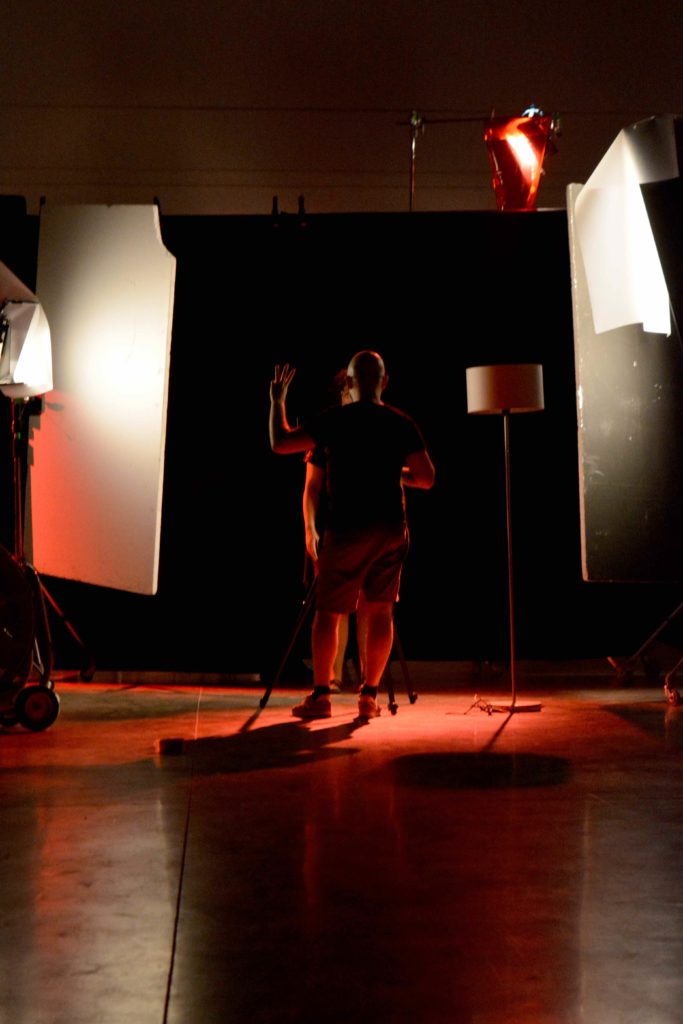
5- Another decision to maintain the continuity between the sign language parts and the illustrations by Badyr was to»freeze» Mónica so the audience could understand that the end of the previous part was about to happen.
This decision also helped during the editing process as it was easy to put together both the video image and the illustration.

6- At the end of the video we recorded a brief explanation and analysis of La dama del cuadro in a completely different space and style to achieve a visual contrast. This content is also part of the book Un confinamiento de cuentos which is why we considered it was important to add it to the sign language version.

Once the story was translated and adapted into a storytelling format and the audiovisual medium in use … we were ready to film!
The recording of La dama del cuadro
To meet the production levels of the illustrations and the acting skills of Monica, we contacted our trustworthy photo studio: Llumm Studios.

Carlos Gutiérrez, a great friend and a great professional, was the director of photography during the process. Between Mónica, him and myself, we decided that we were going to keep it simple: a black background and a colour backlight for the narrator and … Action!

Concerning the camera settings, we kept in mind that the shutter speed had to be maximised to ensure a good result as hands could be blurry when moving fast.
This parameter was set to be 100, even 200, to provide a clean and a clear image of the sign language.

La dama del cuadro in sign language
When we suggested Monica to be in charge of the acting, we knew she was going to do it amazing. However, she amazed us greatly! It seemed that the story was meant for her.


Once again, the filming was carried out without a sign language interpreter. How beautiful it is to work creativity with no language barriers!

In miCINEinclusivo.com we want to express our gratitude to all those interpreters out there that break language barriers between sign language speakers and not speakers. However, we also want to remind you all how important it is to provide education and knowledge about the sign language to work in a full inclusion context.
Final result
Where can you see this project?
Click the following link. Hope you enjoy!
Thank you very much to the whole team behind this project, including our photographer Lina Soler. If it wasn’t for her great documentation work, this blog would not have been as illustrated as intended.
Conclusion
If you have reached this point, thanks a lot for your interest and attention! We hope this article served to remember the potential and richness of the sign language, not only for communication purposes, but as an artistic and narrative element.
This has been our main goal from the beginning: to highlight the responsibility and the proper treatment that audio-visual content in sign language must have. For that, it is essential to ALWAYS count with deaf people in the team. By doing so, this community will identify itself with the project and have a perfect access to cultural contents in their language.
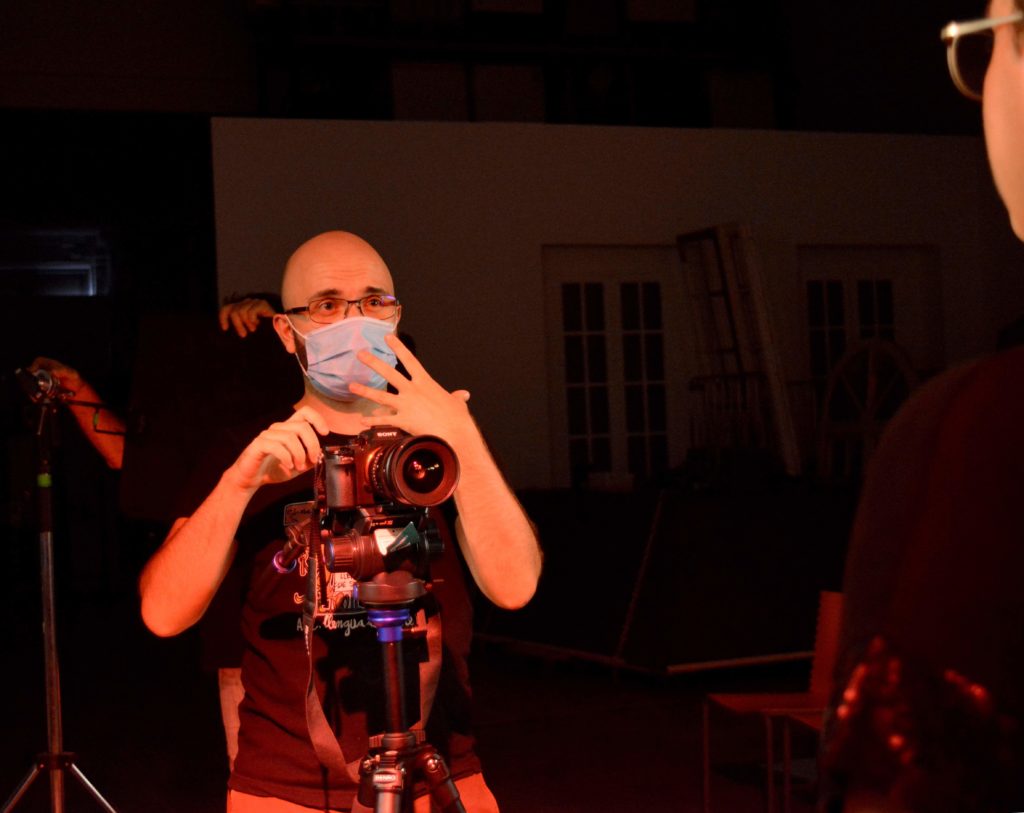
Even though a lot of modifications and adaptations were done to transmit everything the original text was intended to, the message and the structure remain the same. This is why we consider this project as an adaptation and a translation instead of a new and independent project.
It follows the same production workflow as every other work in our inclusive filmography does, being the main key points:
1- Previous knowledge of the accessible tools, languages in use and communication forms for people with disabilities.
2- Active participation of people with disabilities in the creation and design process.
3- Previous knowledge and experience of the artistic field and resources.
4- Creative development of accessibility on the part of the whole team, from the script to the distribution.
5- Testing of the final product.
It has been a great pleasure to work in this project and we hope it to be the first of many more!
Translation by Carmen Ibáñez

